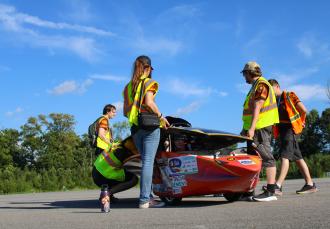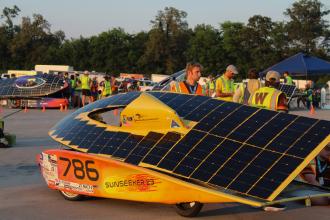Sunseeker shines as WMU team 'exceeds expectations' at Formula Sun Grand Prix
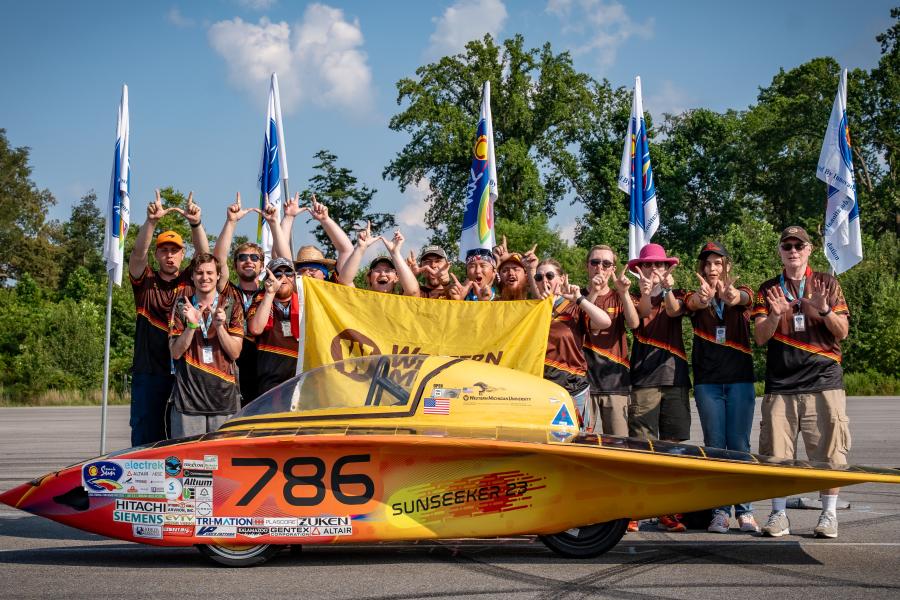
The Sunseeker Solar Car Project took fourth place in the 2025 Elecktrek Formula Sun Grand Prix.
Courtesy: Cora Kennedy
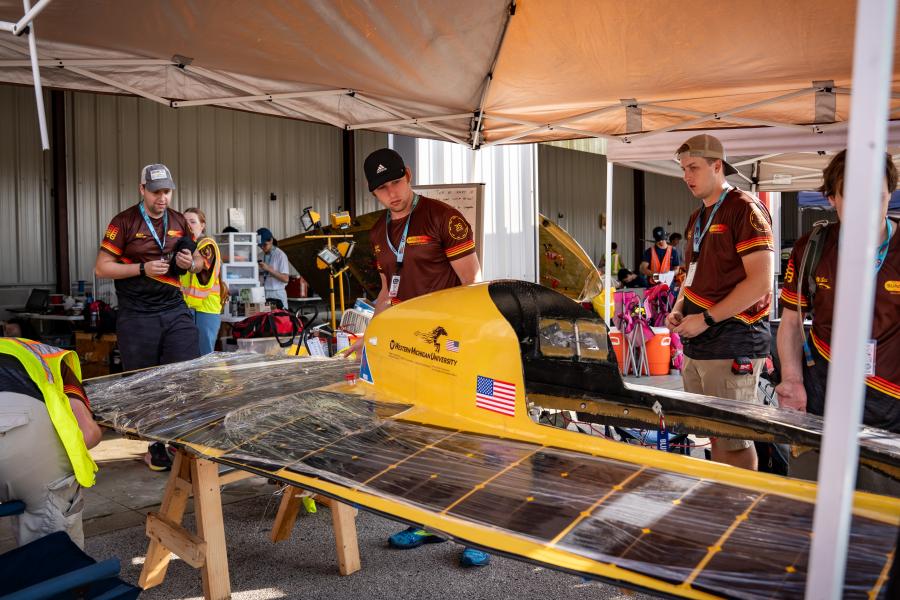
The vehicle had to pass a number of safety checks in the scrutineering phase of the competition before making it onto the track.
Courtesy: American Solar Challenge
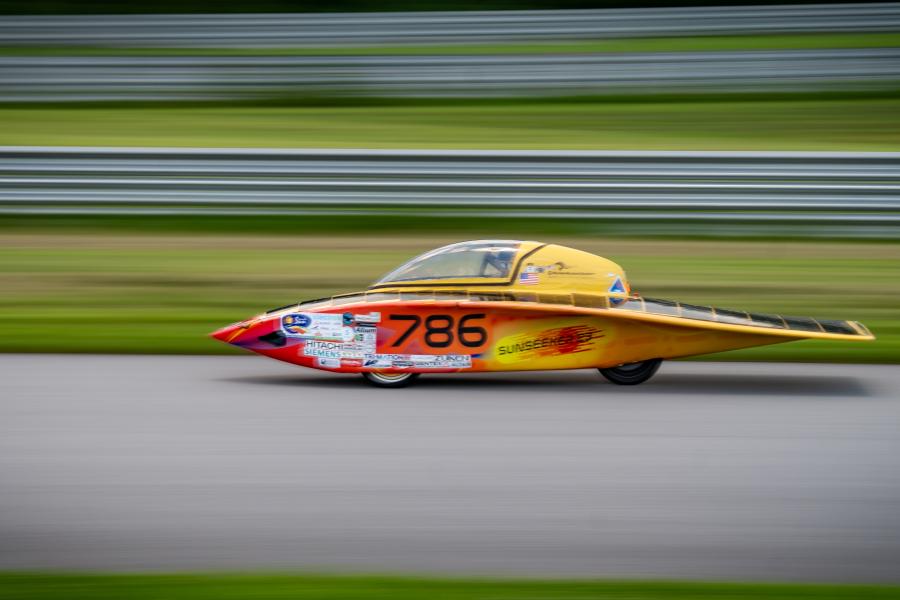
Sunseeker 23 completed 155 laps in the Formula Sun Grand Prix.
Courtesy: American Solar Challenge
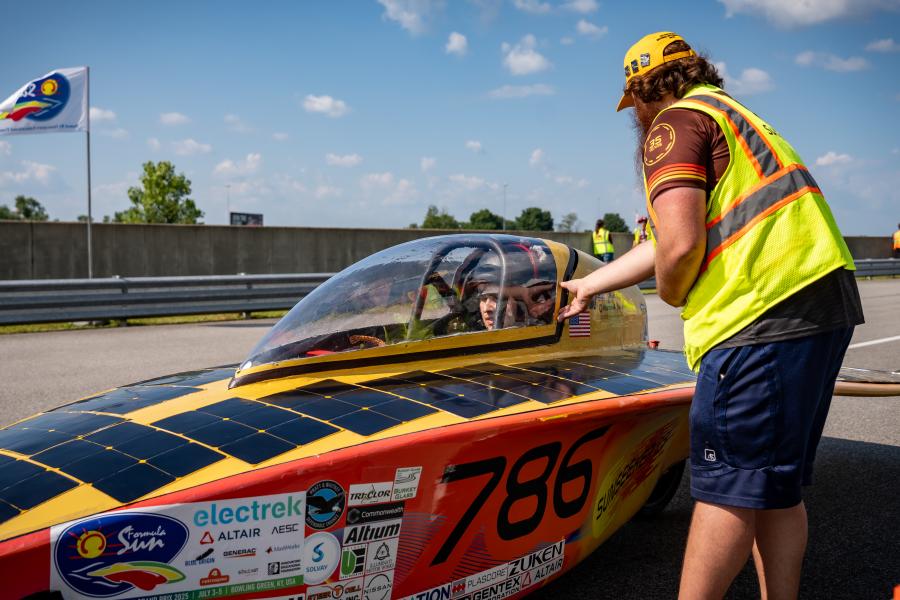
Four team members took turns in the driver's seat during the competition.
Courtesy: American Solar Challenge
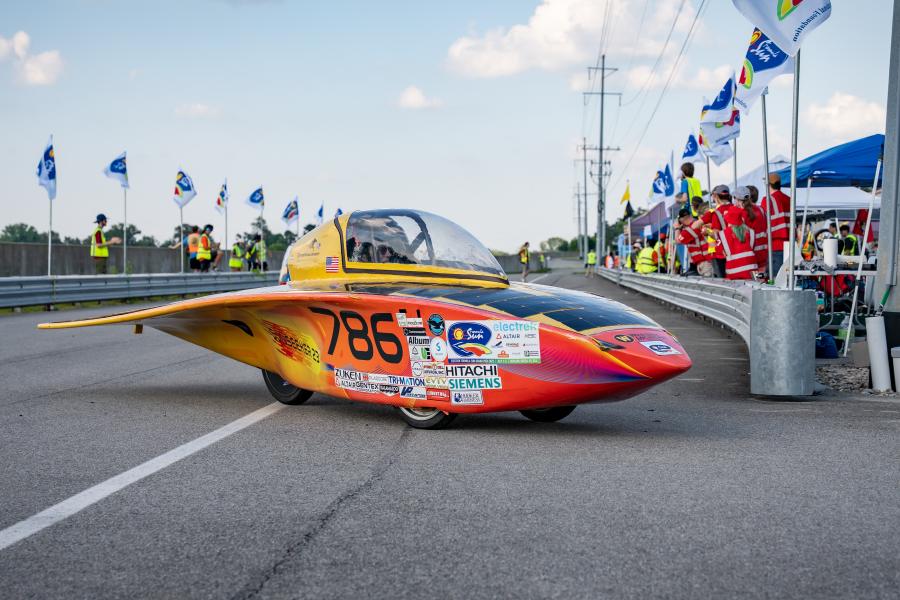
Sunseeker 23 won the competition's Aesthetics Award.
Courtesy: American Solar Challenge
KALAMAZOO, Mich.—The future is bright for the Sunseeker Solar Car Project. The Western Michigan University solar racing team eclipsed a number of collegiate competitors to finish the 2025 Electrek Formula Sun Grand Prix in fourth place with 155 laps—the team's best finish in over a decade.
"It really feels like the start to a comeback for the team, and I have high hopes for what we can accomplish next year," says Ashley Faulk, an engineering design technology major from Elmhurst, Illinois, and Sunseeker's mechanical manager. "This event has been the culmination of hard work for at least the last three years."
Held in early July at the National Corvette Museum Motorsports Park in Bowling Green, Kentucky, more than 30 teams from across North America battled in the annual track competition.
"My favorite part of the Formula Sun Grand Prix is always seeing our car running on the track and seeing the solar car community in full force," says Maddy Reidy, a criminal justice studies major from Kalamazoo, who is the team's director of media. "All these teams come together and are helping each other get their cars on the track, cheering each other on and wanting other teams to succeed."
Getting on track
Completing the most laps over the course of the race is the ultimate goal. In order to earn a spot on the track, teams have to first clear the scrutineering round. It involves event technical staff inspecting all aspects of the vehicles, from safety equipment and driver operations to electrical and mechanical systems, battery protection and dynamics. Drivers also have to demonstrate they can get out of the car in less than 10 seconds in the event of an emergency.
Sunseeker passed the round with flying colors, only having to make minor adjustments along the way. It was a huge accomplishment considering what could have been a catastrophic setback for the team that happened in the final days of preparation on Western's campus.
"A week before we left for the race, our left steering arm broke during testing. With the help of my teammates and student projects lab supervisor Allin Karhl, we were able to design and manufacture an improved replacement part for the car that survived the event," says Faulk.
The team's solar array also had a lower power output than expected, but hard work from the Sunseeker strategy team helped optimize battery use and kept the car on the track for an impressive performance. The thrill of finding innovative solutions quickly is part of the draw for many team members.
"Nothing ever quite works perfectly, and coming up with solutions on the fly is some of the most gratifying work I do for the team," says Luke Edwards, an electrical engineering major from Batavia, Illinois, who is the team's electrical manager.
Charging ahead
The Sunseeker Solar Car Project operates on a three-year cycle, designing, fabricating and eventually racing a fully solar-powered vehicle. As an entirely student-run operation, It takes dozens of Broncos from across the University to bring the vision to life.
The team's current racing vehicle, Sunseeker 23, was unveiled in October 2023. Team members say it's the sleekest, most technically efficient iteration yet. Judges at the Formula Sun Grand Prix agreed, giving the team the competition's Aesthetics Award.
"Over the semesters, we have gone from a very heavy solar car to a lighter solar vehicle, and we improved a lot of the systems on the vehicle that were underperforming and causing issues," says Drew Thompson, a computer engineering major from Battle Creek, Michigan, who is the team's program lead and one of Sunseeker's drivers. "The team has come a long way."
After the stellar performance at this year's race, team members are eager to head back to the lab and address some of the challenges that arose, like refining the steering system and optimizing the array. They'll also start getting to work on designing the next Sunseeker model.
While the team is extracurricular, members say being involved bolsters their resumes and helps put them on track for success in their careers after graduation.
"Sunseeker has helped me academically through reinforcing my learning with hands-on experience related to my coursework and helping connect me to other students who've already taken a lot of the same classes I'm taking," says Faulk.
Zachary Kostelansky, a manufacturing engineering major from Apollo, Pennsylvania, who is the team's aerodynamics lead, agrees. "Each year I'm on this team, I learn new skills, gain confidence in my abilities and get to help others do the same."
For more WMU news, arts and events, visit WMU News online.


